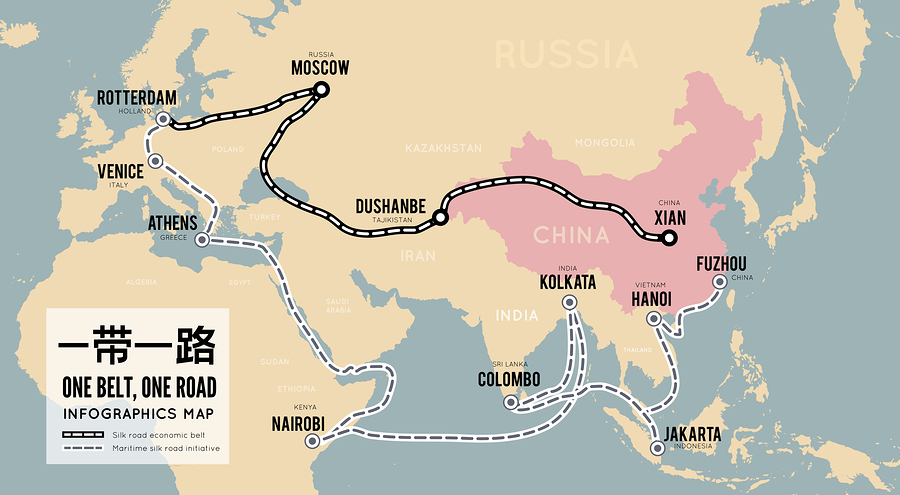Launched in 2013 by President Xi Jinping when he took power, the Belt and Road Initiative (BRI) aims to resurrect the mythical Silk Road between China and Europe, through construction of infrastructure in nearly 70 countries. But what is behind this titanic project that would affect one-third of the world’s economy and two-thirds of the world’s population?
A project serving a disproportionate ambition
The Chinese project Yi dai yi lu aims to invest massively in nearly 70 countries in Asia, Africa and Europe, with construction of roads, railways, ports, viaducts… in order to connect the Middle Kingdom to Europe. Why be involved in such a mammoth project, estimated at between $1 trillion and $8 trillion (depending on how much existing infrastructure is upgraded), and requiring complex financing strategies such as a development bank bringing together some sixty countries? It is less by nostalgia for the former Han dynasty than for hegemonic concern. Promised to become the leading global economy in a few years, ahead of the United States, China must conduct a policy of major work to offset the economic slowdown that we are beginning to see in financial markets. In any case, President Xi Jinping would not object to becoming the master of the world in various fields. On the one hand, in economic terms, these 7,000 projects would allow Chinese companies to rely on growth drivers abroad, as well as to exploit the world’s natural resources and control their delivery. On the other hand, politically, China could show Western civilizations that its strong and centralized regime enables large-scale projects to be carried out and that its modus operandi could inspire some global organizations.
A path fraught with pitfalls and risks
Launched a few years ago, the Belt and Road Initiative is expected to be completed in 2049, for the 100th anniversary of the creation of the People’s Republic of China. Even though a good safety margin seems to have been anticipated… various difficulties are already becoming apparent and may slow down the pace set by the Chinese authorities. In Indonesia, a contract signed in 2015 for a high-speed rail was delayed for political reasons. In Thailand, funding difficulties are hindering progress of the project. In Laos, it is the reluctance of the inhabitants to finance a railway line whose cost ($7.5 billion) represents 50% of the gross domestic product of the country that is slowing construction. In Pakistan, attacks against Chinese engineers and the train explosion are challenging the $46 billion contract signed with China. To these various difficulties are added environmental risks. A World Wildlife Fund report says that the BRI could destabilize more than 1,700 diversity preservation zones – which host 265 endangered species, nearly 40 of which are in critical danger of extinction – and aggravate gas emissions due to the subsequent investment in pipelines.
It is undeniable that the Belt and Road Initiative is responding to hegemonic ambitions, both commercially and politically. What if China took the lead in this project to become an example of responsible development by imposing strict environmental standards?
